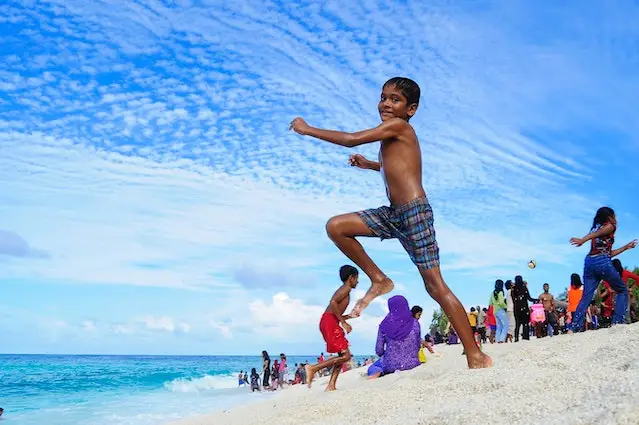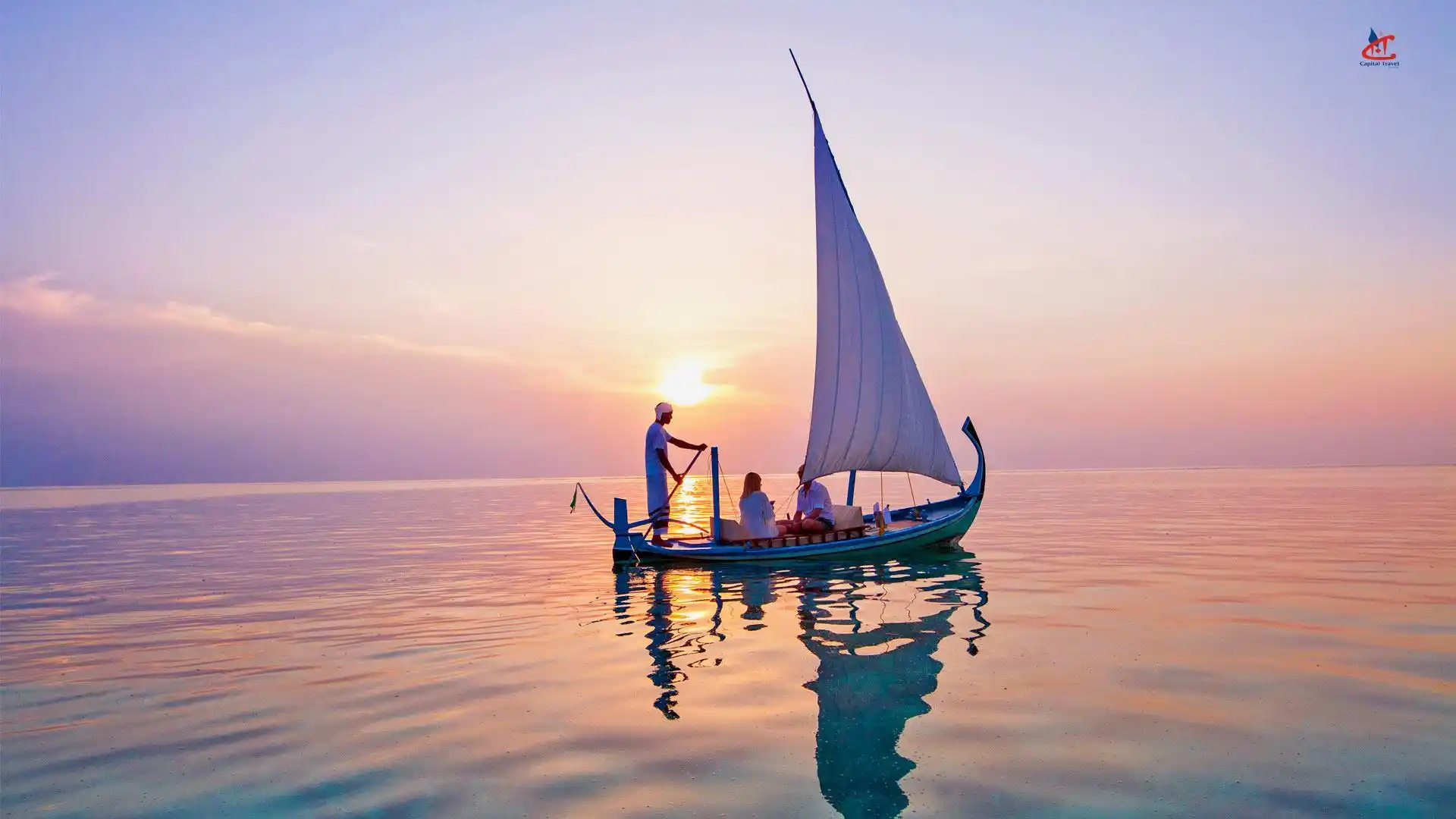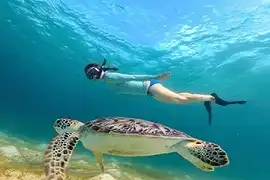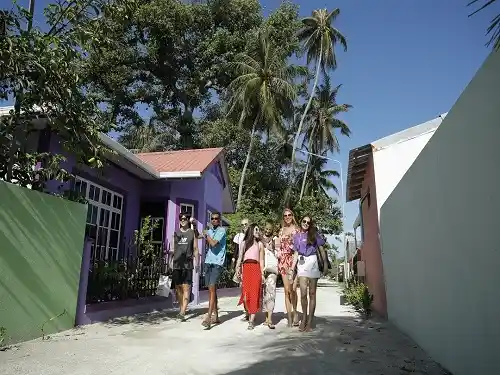Discover one of the largest local islands in the Maldives with its expansive beaches, unique mangrove ecosystems, and distinctive blend of agriculture and fishing traditions
Located in the Haa Alifu Atoll, Kelaa Island stands out as one of the largest inhabited islands in the Maldives. This spacious island offers a distinctive experience with its unusually wide beaches, unique ecology including mangrove areas, and a traditional lifestyle that blends fishing with agriculture—a rarity in the Maldives.
What makes Kelaa special is its generous proportions and diverse natural environments. Unlike many Maldivian islands that can be walked around in 30 minutes, Kelaa's larger size provides room for varied landscapes, from its famous wide beaches to interior agricultural areas and coastal mangroves. With a population of around 1,800 residents spread across a larger area, the island offers a less crowded atmosphere while maintaining a vibrant community.
Visitors to Kelaa are drawn by its spectacular beaches that rank among the widest in the Maldives, its unique ecological features including mangrove ecosystems, and the opportunity to experience a more diverse island environment than typically found in the archipelago. The island's blend of traditional fishing culture with agricultural practices provides insights into a more self-sufficient way of life that distinguishes Kelaa from many other Maldivian communities.
Kelaa Island is situated in the northern part of Haa Alifu Atoll, approximately 310 kilometers north of Male. Its position in the northernmost atoll of the Maldives places it in a region known for its pristine natural environments and traditional island communities.
The island's substantial size makes it distinctive on the map, as it covers a significantly larger area than most inhabited islands in the Maldives. This generous proportion has allowed for more diverse development and natural environments to coexist, creating a unique island ecosystem.
Kelaa Island stands out in the Maldives for its remarkable natural characteristics that create a diverse and distinctive environment. From its expansive beaches to unique ecosystems, Kelaa offers visitors a chance to experience aspects of Maldivian nature rarely found on other islands.
Kelaa is renowned for having some of the widest beaches in the Maldives. Unlike the narrow strips of sand found on many islands, Kelaa's beaches extend up to 100 meters in width at low tide, creating vast expanses of pristine white sand. This unusual feature provides ample space for beachgoers to spread out and enjoy the shoreline without feeling crowded.
The island's eastern beach is particularly impressive, stretching along much of the coastline with powdery white sand and crystal-clear waters. The generous width of these beaches creates a distinctive landscape that sets Kelaa apart from other Maldivian islands and provides excellent opportunities for beach walks, relaxation, and photography.
Kelaa features rare mangrove ecosystems that are uncommon in the Maldives. These coastal wetlands are found primarily on the island's southern side and host a variety of plant and animal species adapted to the unique conditions where freshwater and saltwater meet.
The mangroves serve as important nurseries for marine life and provide habitat for birds and other wildlife. They also play a crucial role in protecting the coastline from erosion and filtering water. Visitors can explore these distinctive ecosystems via guided tours that offer insights into their ecological importance and the diverse species they support.

Kelaa's larger size allows for a more spread-out community layout with wider roads and more generous public spaces than typically found on Maldivian islands.

Despite its agricultural activities, fishing remains an important part of Kelaa's economy and cultural identity, with traditional fishing methods still practiced by local fishermen.

Kelaa is one of the few Maldivian islands with significant agricultural activity, growing crops like watermelon, pumpkin, chili, and various tropical fruits in its fertile soil.

Traditional Boduberu performances and other cultural expressions reflect both the fishing and agricultural heritage of the island.
Kelaa offers a range of accommodation options that take advantage of the island's spacious layout and natural features. The island's guesthouses provide comfortable stays while maintaining strong connections to the local community and environment.

Several guesthouses take advantage of Kelaa's exceptional beaches, offering accommodations with direct access to the island's famous wide stretches of sand. These properties feature comfortable rooms, outdoor dining areas with sea views, and easy access to swimming and snorkeling.
Price Range: $50-80 per night
Features: Beach access, sea views, water sports equipment

Some accommodations emphasize Kelaa's unique ecological features, offering stays that provide access to the island's mangroves and agricultural areas. These properties often organize nature walks, mangrove tours, and agricultural visits as part of their guest experience.
Price Range: $45-70 per night
Features: Ecological focus, guided nature tours, educational experiences

Traditional family-operated guesthouses offer authentic Maldivian hospitality with home-cooked meals featuring fresh local produce and seafood. These accommodations provide a genuine connection to island life through their hosts, who often share stories about Kelaa's distinctive culture and traditions.
Price Range: $40-60 per night
Features: Authentic hospitality, home-cooked meals, cultural insights
Kelaa Island is renowned for its exceptional beaches, which are among the widest and most impressive in the Maldives. The island's coastline offers a variety of beach environments, from vast expanses of white sand to more sheltered areas near the mangroves.
Kelaa's eastern beach is its crown jewel, stretching along much of the coastline with an extraordinary width that can reach up to 100 meters at low tide. This vast expanse of powdery white sand creates a spectacular landscape that feels almost surreal in its proportions. The gradual slope into the sea creates safe swimming conditions, while the extensive shallow areas are perfect for wading and relaxation.
The island has a designated "bikini beach" where tourists can wear Western-style swimwear. This area provides a relaxing environment while respecting local cultural norms. The remaining beaches require modest dress as they are used by the local community.
The southern part of the island features a different type of coastline where mangroves meet the sea. This unique environment creates interesting landscapes and provides habitat for various marine species. While not suitable for traditional beach activities, this area offers fascinating opportunities for nature observation and photography.


The waters around Kelaa Island offer excellent marine biodiversity:
The island's diverse coastal environments, from wide beaches to mangroves, support different marine ecosystems that provide varied snorkeling experiences.
Kelaa offers a diverse range of activities that take advantage of its unique natural features and cultural characteristics. The island's larger size and varied environments provide opportunities for exploration beyond what's typically available on smaller Maldivian islands.








Discover the unique blend of expansive beaches, mangrove ecosystems, and agricultural heritage that makes Kelaa Island a natural treasure in Haa Alifu Atoll.
Plan Your TripThe most convenient way to reach Kelaa is by domestic flight from Male to Hanimaadhoo International Airport (60 minutes), followed by a 40-minute speedboat transfer. Public ferry service operates weekly from Male (approximately 16-18 hours journey time). Private speedboat transfers can be arranged through guesthouses (approximately 5-6 hours from Hanimaadhoo).
Kelaa is renowned for having some of the widest beaches in the Maldives. Unlike the narrow strips of sand found on many islands, Kelaa's beaches extend up to 100 meters in width at low tide, creating vast expanses of pristine white sand. The island's eastern beach is particularly impressive, stretching along much of the coastline with powdery white sand and crystal-clear waters. This unusual feature provides ample space for beachgoers to spread out and enjoy the shoreline without feeling crowded, creating a distinctive landscape that sets Kelaa apart from other Maldivian islands.
Mangroves are coastal wetland ecosystems where trees and shrubs grow in brackish water (a mix of freshwater and saltwater). They are relatively rare in the Maldives, making Kelaa's mangrove areas ecologically significant. These ecosystems serve as important nurseries for juvenile fish and other marine species, provide habitat for birds and other wildlife, protect the coastline from erosion, and filter water. On Kelaa, the mangroves are found primarily on the island's southern side and can be explored through guided tours that highlight their ecological importance and the diverse species they support.
Kelaa is one of the few Maldivian islands with significant agricultural activity, thanks to its larger size and fertile soil. Local farmers cultivate a variety of crops including watermelons, papayas, bananas, pumpkins, chilies, and other tropical fruits and vegetables. This agricultural tradition is uncommon in the Maldives, where most islands lack sufficient space and suitable soil for farming. Visitors can take agricultural tours to learn about these farming practices and see how they contribute to the island's self-sufficiency and cultural identity.
The best time to visit Kelaa Island is during the northeast monsoon season (December to April), which brings dry, sunny weather with lower humidity and calmer seas. This period is ideal for enjoying the island's expansive beaches and outdoor activities. The northern atolls can experience slightly different weather patterns than the southern regions, but generally follow similar seasonal trends. Water temperature remains warm (27-30°C/80-86°F) throughout the year. For those interested in agricultural aspects, visiting during harvest seasons (which vary by crop) can provide additional insights into the island's farming traditions.